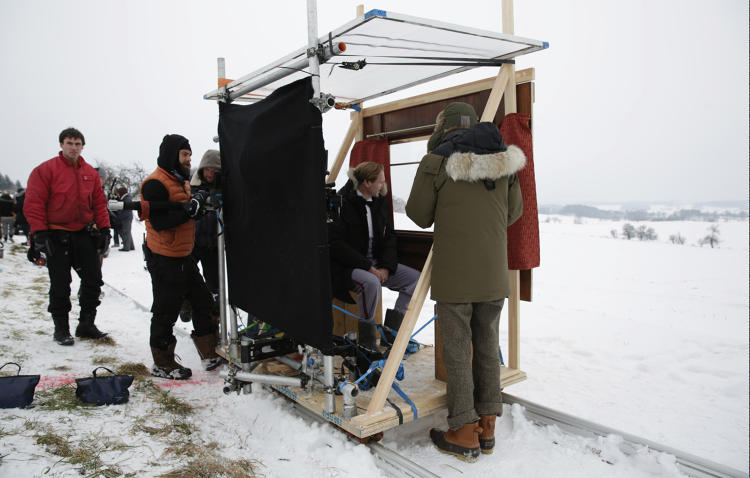My wife Tracy did crew catering.
Later, I'll add more about the craziness of the crew and a link to the film once its on the competition website.
The Loom of Doctor Flowers by Super Furious Ninja Dragon has made the Dunedin City Finals in the following categories.
LETTERBOXD BEST DIRECTOR
The B-Team - Nic Bathgate, James Elworthy
Paddle Pops - Ruby Harris
Studio GIblets - Phil Davison
BEST ACTOR
Stephen Lawrenson from Bus of The Undead
Grant McNaughton from The DandyLions
Nathan Kennedy from Super Furious Ninja Dragon
Harrison Kennedy from Paddle Pops
Phillip Schlup from Studio Giblets
BEST ACTRESS
Maggie Watts from Super Furious Ninja Dragon
Ola Szukiel from The DandyLions
Jemma Osten from Bus of The Undead
BEST CINEMATOGRAPHY
Begged Borrowed Stolen - Josh Wallace, Paul Green
Woof Bloody Woof - Bruno Willis
The DandyLions - Matilda McAndrew, Ola Szukiel
Studio Giblets - Phil Davison
Super Furious Ninja Dragon - James Wilkinson
BEST ORIGINAL SCORE
Maddie Jones - Hot Chili
James Quested - Arrested Developers
Abe Baillie- Paddle Pops
Harriet Love - The Happy Little Peas
Derek Smith - Begged Borrowed Stolen
BEST SCRIPT
Arrested Developers
Bus of The Undead
Go Go All The Time
Begged Borrowed Stolen
BEST EDITING
The DandyLions - Matilda Macandrew David Prime
Super Furious Ninja Dragon - Matt Inns
The B-Team - Stu Mackenzie, James Elworthy, Nic Bathgate
Paddle Pops - Elliot Blyth
Studio Giblets - Phil Davison
BEST MAKEUP
Super Furious Ninja Dragon - Maggie Watts
Bus of The Undead
INCREDIBLY STRANGE
Symmetery by Go Go All The Time
Bronads by Arrested Developers
BEST USE OF CHARACTER
Encore Une Fois by Studio Giblets
Kit-astrophy by Paddle Pops
SYD by Cat in a River
BEST USE OF LINE
Dead Meat by Team Super Best Friends
SYD by Cat in a River
BEST USE OF PROP
The ‘C’ Word by Begged Borrowed Stolen
The Loom of Doctor Flowers by Super Furious Ninja Dragon
Encore Une Fois by Studio Giblets
BEST SCHOOL TEAM
Breathe by Hot Chili
The Lamentable Tragedy of Charlie Flower by The DandyLions
SYD by Cat in a River
Gaspodes Paradise by Woof Bloody Woof
The Kintters Nightmare by Balclootha
BEST ANIMATION
Announced on the Night
BEST DISQUALIFIED
Announced on the Night
UPDATE 16 October 2016
The Loom of Doctor Flowers by Super Furious Ninja Dragon won the Dunedin City Finals last night taking out City winner with Best Film. And also got Best Art Direction (Steven Woller), Best Cinematography (James Wilkinson) and Best Actress and Best Makeup (Maggie Pirie).
And prize for City winner is
The Glorious APEE Statue + Certificate
$300 Cash Grant Courtesy of Wingnut Films
$300 Cash Grant Courtesy of NZFC
15" Pavilion Core I7 Notebook (valued at $1998) courtesy of HP
The Making Of The Loom of Doctor Flowers
THE LOOM OF DOCTOR FLOWERS
Dr Flowers - Nathan Kennedy
Elsa - Maggie Watts
Directed by - Matt Inns
Produced by - Steve Woller & Matt Inns
Story by - Steve Woller, Matt Inns, Storm Reece, Sharon Reece, Rachel Kinsella
Director of Photography - James Wilkinson
Production Designer - Steve Woller
Production Co-ordinator - Rachel Kinsella
Production Assistant - Sharon Reece
Art Dept Assist - Mike Peters, Vicky Smit, Rachel Kinsella
Makeup Designer - Maggie Watts
Unit - Tracy Peters
Gaffer - Mei Ling Au
Assistant Camera - Iris Shao Wen





















